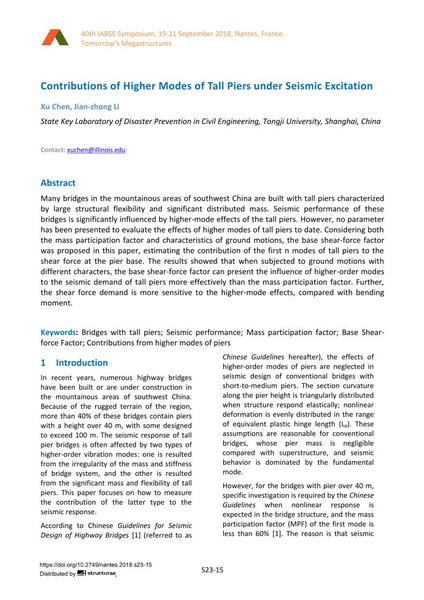Contributions of Higher Modes of Tall Piers under Seismic Excitation

|
|
|||||||||||
Détails bibliographiques
| Auteur(s): |
Xu Chen
(State Key Laboratory of Disaster Prevention in Civil Engineering, Tongji University, Shanghai, China)
Jian-zhong Li (State Key Laboratory of Disaster Prevention in Civil Engineering, Tongji University, Shanghai, China) |
||||
|---|---|---|---|---|---|
| Médium: | papier de conférence | ||||
| Langue(s): | anglais | ||||
| Conférence: | IABSE Symposium: Tomorrow’s Megastructures, Nantes, France, 19-21 September 2018 | ||||
| Publié dans: | IABSE Symposium Nantes 2018 | ||||
|
|||||
| Page(s): | S23-15 | ||||
| Nombre total de pages (du PDF): | 8 | ||||
| DOI: | 10.2749/nantes.2018.s23-15 | ||||
| Abstrait: |
Many bridges in the mountainous areas of southwest China are built with tall piers characterized by large structural flexibility and significant distributed mass. Seismic performance of these bridges is significantly influenced by higher-mode effects of the tall piers. However, no parameter has been presented to evaluate the effects of higher modes of tall piers to date. Considering both the mass participation factor and characteristics of ground motions, the base shear-force factor was proposed in this paper, estimating the contribution of the first n modes of tall piers to the shear force at the pier base. The results showed that when subjected to ground motions with different characters, the base shear-force factor can present the influence of higher-order modes to the seismic demand of tall piers more effectively than the mass participation factor. Further, the shear force demand is more sensitive to the higher-mode effects, compared with bending moment. |
||||
